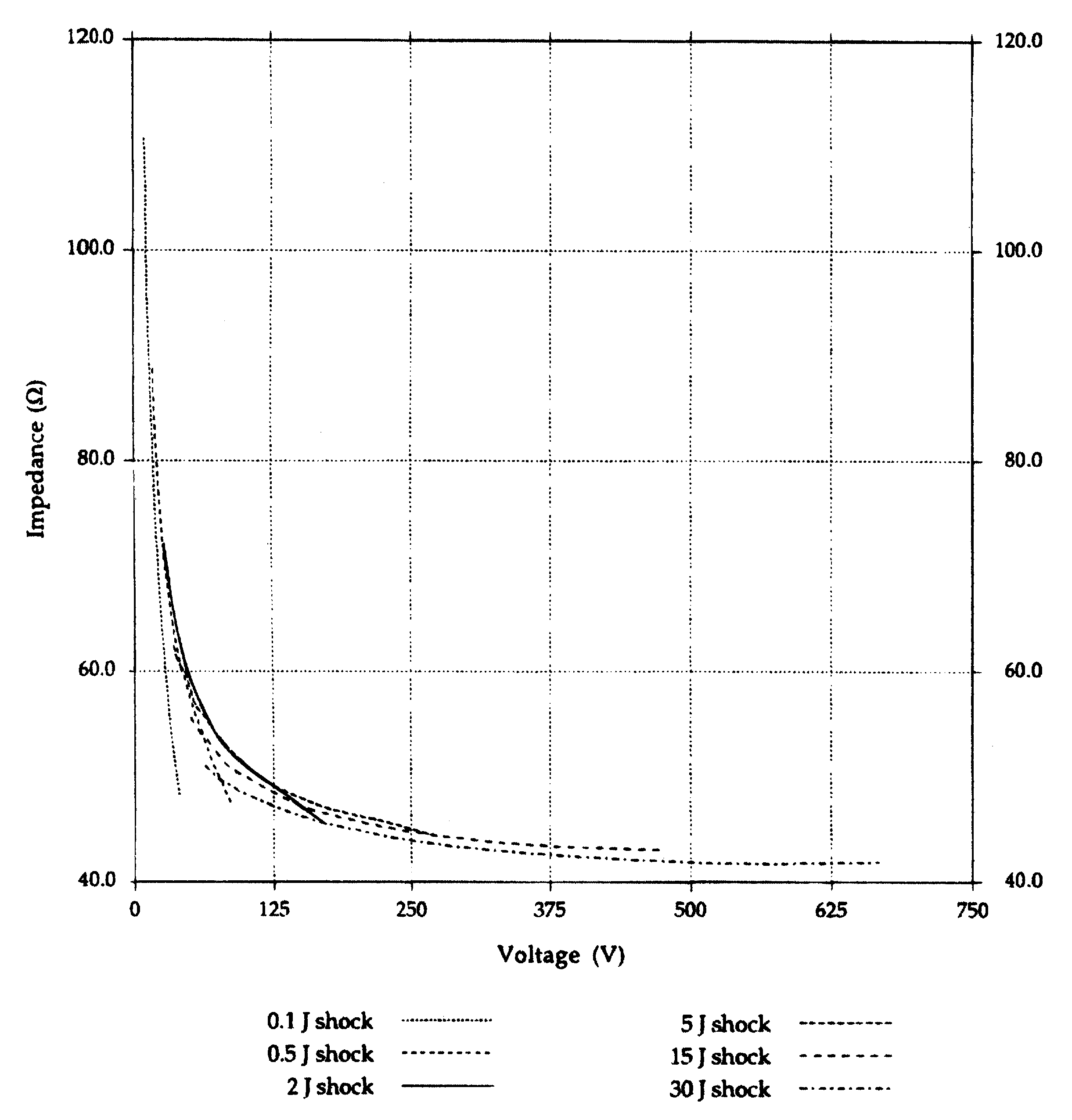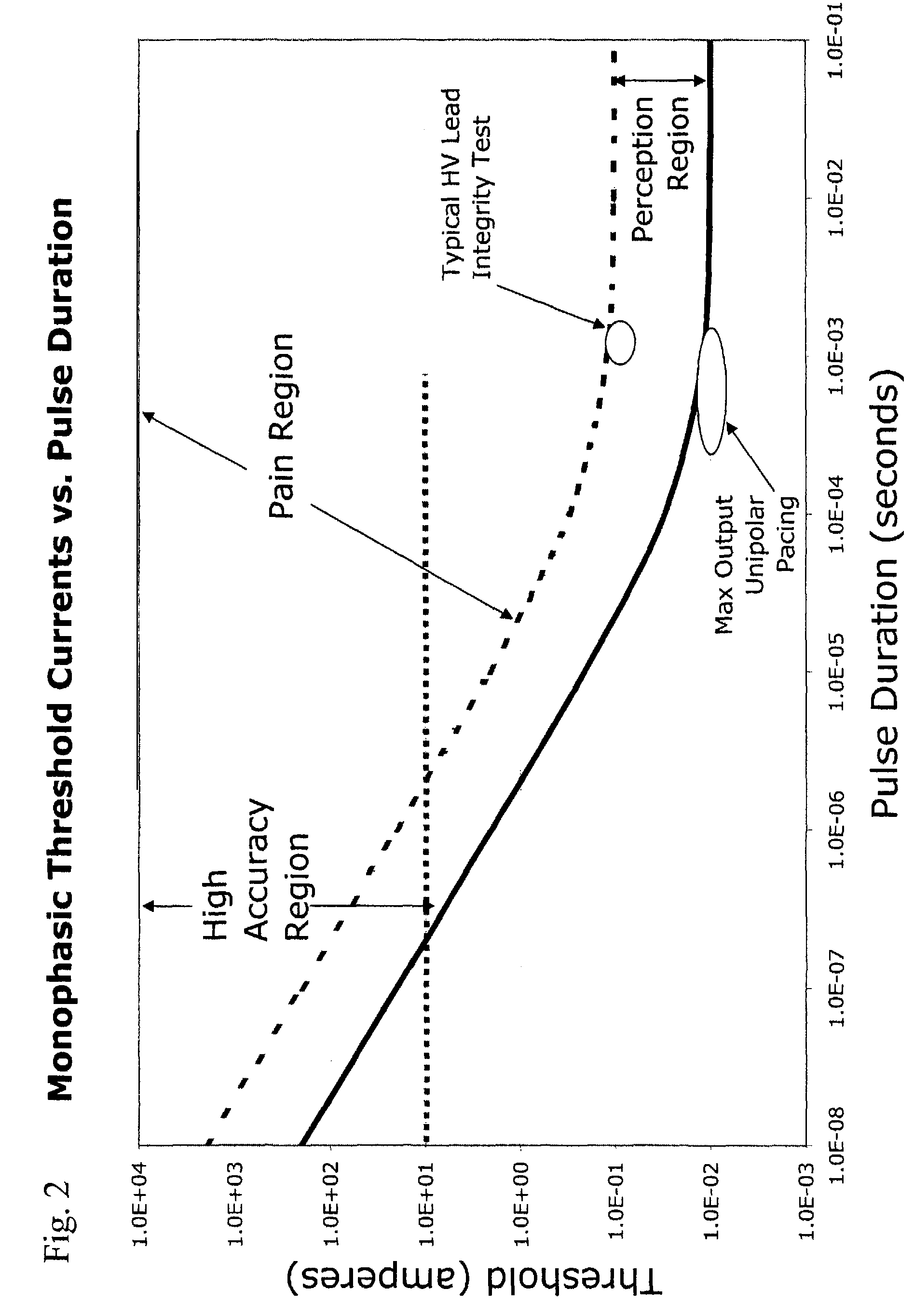Apparatus and methods for measuring defibrillation lead impedance via a high magnitude, short duration current pulse
a technology of defibrillation lead and high magnitude, applied in the field of implantable medical devices, can solve the problems of inconsistent impedance measurement, inconsistent impedance measurement, and incomplete embodiment of icd devices, and achieve the effect of more accurate impedance measurements
- Summary
- Abstract
- Description
- Claims
- Application Information
AI Technical Summary
Benefits of technology
Problems solved by technology
Method used
Image
Examples
Embodiment Construction
[0028]As seen in FIG. 1 the measured impedance is highly dependent on the impressed voltage and the current used. The following calculation yields the voltage required to obtain a 10% error in the impedance. As also shown in FIG. 1, the measured impedance for a typical defibrillation electrode system is giving by:
Z=41+(960 / V)−(2041 / (V^2))
where V is the impressed voltage. For larger voltages the last term is insignificant. Thus the measured impedance can be estimated by:
Z=41+(960 / V)
where the actual (high voltage) impedance was 39.4Ω. Thus, to calculate the voltage for a 10% error (approximately 4 ohms), set:
4+39.4Ω=43.4=41+(960 / V)
[0029]which reduces to 2.4=(960 / V), yielding a value for V of 400 volts. For the impedance of 40Ω, this equates to a required current of ten amperes which would be extremely painful to a conscious person. However, as shown in FIG. 2, even test pulses of one ampere can give significant accuracies beyond that seen with conventional approaches at lower current ...
PUM
 Login to View More
Login to View More Abstract
Description
Claims
Application Information
 Login to View More
Login to View More - R&D
- Intellectual Property
- Life Sciences
- Materials
- Tech Scout
- Unparalleled Data Quality
- Higher Quality Content
- 60% Fewer Hallucinations
Browse by: Latest US Patents, China's latest patents, Technical Efficacy Thesaurus, Application Domain, Technology Topic, Popular Technical Reports.
© 2025 PatSnap. All rights reserved.Legal|Privacy policy|Modern Slavery Act Transparency Statement|Sitemap|About US| Contact US: help@patsnap.com



